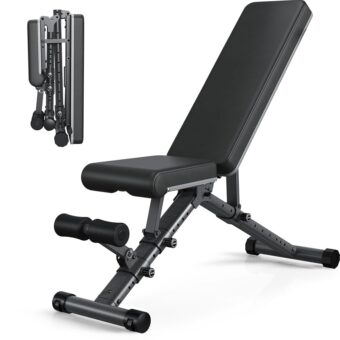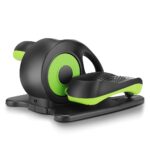In today’s fitness-focused world, a solid understanding of macronutrients—carbohydrates, proteins, and fats—is essential for anyone seeking to enhance their physical performance and overall well-being. This step-by-step guide, “How to Understand Macronutrients for Physical Fitness,” simplifies the often-confusing concepts of macronutrients, exploring their specific functions in energy production, muscle recovery, and body composition. Whether you’re a beginner or looking to refine your nutritional knowledge, this guide will equip you with practical insights to effectively integrate macronutrients into your diet for optimal fitness results.
Identify the Macronutrients
Understand the three main macronutrients: carbohydrates, proteins, and fats. Carbohydrates provide energy for your body, acting as the primary fuel source. Think of them as the gas that powers your vehicle; foods like bread, rice, and fruits are great examples. Analyze proteins, which are crucial for growth, repair, and maintaining body structures. Incorporate sources like meat, beans, and eggs into your meals to support muscle health and tissue repair. Consider fats, which are necessary for hormone production and nutrient absorption. Include healthy fats from avocados, nuts, and olive oil in your diet for optimal health.
Determine Your Daily Caloric Needs
Calculate your daily caloric requirements by considering your age, gender, weight, activity level, and fitness goals. Use an online calculator or the Mifflin-St Jeor equation for accuracy. For example, if you are a 30-year-old woman who weighs 150 pounds, exercises moderately, and aims to lose weight, you would need to account for your Basal Metabolic Rate (BMR) and then factor in your activity level to find your Total Daily Energy Expenditure (TDEE).
Multiply your BMR by your activity factor—ranging from 1.2 for sedentary to 1.9 for very active—and adjust this number based on whether you want to lose, maintain, or gain weight. This information will provide the starting point to determine how much of each macronutrient—carbohydrates, proteins, and fats—you need in your diet, allowing you to tailor your meals according to your specific health goals.
Understand the Role of Each Macronutrient
Explore how carbohydrates function as the body’s primary energy source by breaking them down into glucose, which fuels your brain and muscles. Understand the critical role of proteins in muscle repair and growth by incorporating sources like lean meats, beans, and legumes into your meals. Recognize the importance of fats in hormone production and nutrient absorption, and ensure you include healthy fats, such as avocados and nuts, in your diet for optimal health. Prioritize a balanced intake of each macronutrient to support overall well-being and performance.
Set Your Macronutrient Ratios
Choose Quality Sources of Macronutrients
Select whole, nutrient-dense foods when choosing your macronutrients. For carbohydrates, prioritize whole grains like brown rice and quinoa, as well as a variety of fruits that provide essential vitamins and minerals. Opt for lean sources of protein such as chicken, turkey, beans, and low-fat dairy options to support muscle repair and growth. Include healthy fats in your diet by incorporating olive oil, a handful of nuts, and creamy avocados, which offer beneficial fatty acids and promote heart health.
Plan Your Meals
Create a meal plan that reflects your calculated macronutrient ratios, ensuring each meal is rich in the nutrients you need for your fitness goals. Include a variety of protein sources, healthy fats, and carbohydrates in each meal, aiming for balance throughout the day. Plan for three main meals accompanied by healthy snacks to keep your energy levels steady. Adjust portion sizes as needed, focusing on whole, unprocessed foods to support your overall well-being.
Monitor Your Intake
Track your food intake daily using apps or journals. Log everything you eat, paying attention to the macronutrients (carbohydrates, proteins, and fats) in each meal. Review your entries at the end of the day to ensure you’re meeting your macronutrient goals. Adjust your food choices as needed based on your tracking, allowing yourself to stay accountable and make informed dietary changes.
Evaluate Your Progress
Track your macronutrient intake diligently through a food diary or an app. Monitor how changes in your protein, carbohydrate, and fat consumption impact your fitness performance and overall energy levels. Evaluate your progress regularly—ideally weekly or bi-weekly—to determine if your current diet aligns with your fitness goals. Adjust your macronutrient ratios as necessary, ensuring you account for any plateaus or changes in your health and activity levels.
Mastering Macronutrients for Success
In conclusion, grasping the role of macronutrients is essential for achieving your fitness goals. By applying the knowledge from this guide, you can create a well-rounded meal plan that aligns with your personal objectives, boosts your performance, and contributes to your overall well-being. Remember, being mindful of your macronutrient intake can make a significant difference in your fitness journey, so take the time to experiment and find what works best for you!
Essential Supplies Needed
Maximize Your Gains
Unleashing Energy: The Impact of Nutrition on Performance and Recovery
By focusing on these aspects, you’ll see how healthy nutrition plays a significant role in enhancing your physical fitness!
Understanding the Link Between Nutrition and Fitness
Pre- and post-workout nutrition plays a crucial role in optimizing your training outcomes. Let’s break down how each contributes to your performance and recovery.
Pre-Workout Nutrition:
1. Energy Availability: Consuming the right mix of carbohydrates and proteins before your workout provides the energy needed for peak performance. Carbs are your body’s main fuel source during exercise, while protein can help maintain muscle mass.
2. Enhanced Performance: When you eat a proper pre-workout meal, studies have shown you may experience improved endurance and strength. This can lead to more effective training sessions and better overall results.
3. Mental Focus: Nutrition can also affect your cognitive function. A well-balanced meal can help you maintain concentration and motivation throughout your workout.
Post-Workout Nutrition:
1. Muscle Recovery: After you train, your muscles need nutrients to recover. Consuming protein helps repair muscle tissue that gets broken down during exercise, while carbohydrates restore glycogen stores.
2. Hormonal Balance: Eating after a workout can also support hormonal responses that are crucial for muscle growth. Insulin, for instance, helps transport nutrients into your cells, aiding recovery.
3. Reduced Muscle Soreness: Proper post-workout nutrition can help reduce muscle soreness and fatigue, allowing you to be ready for your next training session sooner.
In summary, paying attention to what you eat before and after your workouts not only maximizes your performance and strength gains but also minimizes recovery time. Make sure you tailor your nutrition to your specific training goals for the best outcomes!


















I struggle with monitoring my intake because I forget to log my meals sometimes. Any tips for making it easier? Like, do you set reminders or something? Would love to hear how others manage this!
Setting reminders can definitely help! Also, consider keeping a food journal or using an app that allows quick logging, like Lose It! or Yummly. Just jotting down meals as you eat can make a difference and help keep you accountable.
Can someone explain more about how to calculate daily caloric needs? I struggle with figuring out what my body actually needs, and I don’t want to eat too little or too much. Any tips would be super helpful!
Great question! To calculate your daily caloric needs, you can use the Mifflin-St Jeor equation, which considers your age, weight, height, and activity level. There are also many online calculators that can simplify this for you. Just remember to adjust based on how your body responds!
I’m curious about meal prepping! Do you guys have any go-to recipes that fit within the macronutrient guidelines? I find it hard to come up with new ideas every week.
I love how this guide breaks everything down! Just a tip: when it comes to protein, I switched to using Greek yogurt instead of regular yogurt for my morning smoothies. It packs so much more protein and keeps me full longer. Anyone else have favorite swaps?
I’ve been tracking my macros for a while now, but I found that the ratios in the guide don’t really suit my energy needs for high-intensity workouts. I upped my carbs a bit and it made a huge difference in my performance. Anyone else adjust their ratios?
I started using MyFitnessPal to track my macros, and it’s been a game changer! I can see exactly where I’m lacking and adjust my meals accordingly. It’s awesome to see progress over time. Anyone else using apps that they love?
MyFitnessPal is a fantastic tool! I also recommend Cronometer for those who want to dive deeper into micronutrients as well. Both apps have their strengths, and it really depends on your personal goals!
I’ve been doing some research and saw that some people have success with a 40/30/30 ratio of carbs, protein, and fats. Does anyone have experience with that? How did it affect your workouts?
The 40/30/30 ratio can work wonders for many! It helps provide a balanced amount of energy while supporting muscle growth and recovery. It’s all about finding what feels right for your body, though, so experimenting is key!
This guide is super helpful! I would love to see more on how to adjust macros for different fitness goals like bulking or cutting. That would be awesome!
I tried adjusting my macros based on this guide and lost 10 pounds in a month! I focused on whole foods like quinoa, lentils, and chicken breast. It’s amazing how nutrition plays such a big role in fitness! Anyone else had similar success stories?
Congrats on your success! It’s inspiring to see how nutrition can transform our fitness journeys. Keep sharing your progress and tips, as it can motivate others in the community!
I think it would be cool if you covered how to balance macronutrients on a budget! Sometimes healthy eating is hard to manage financially.